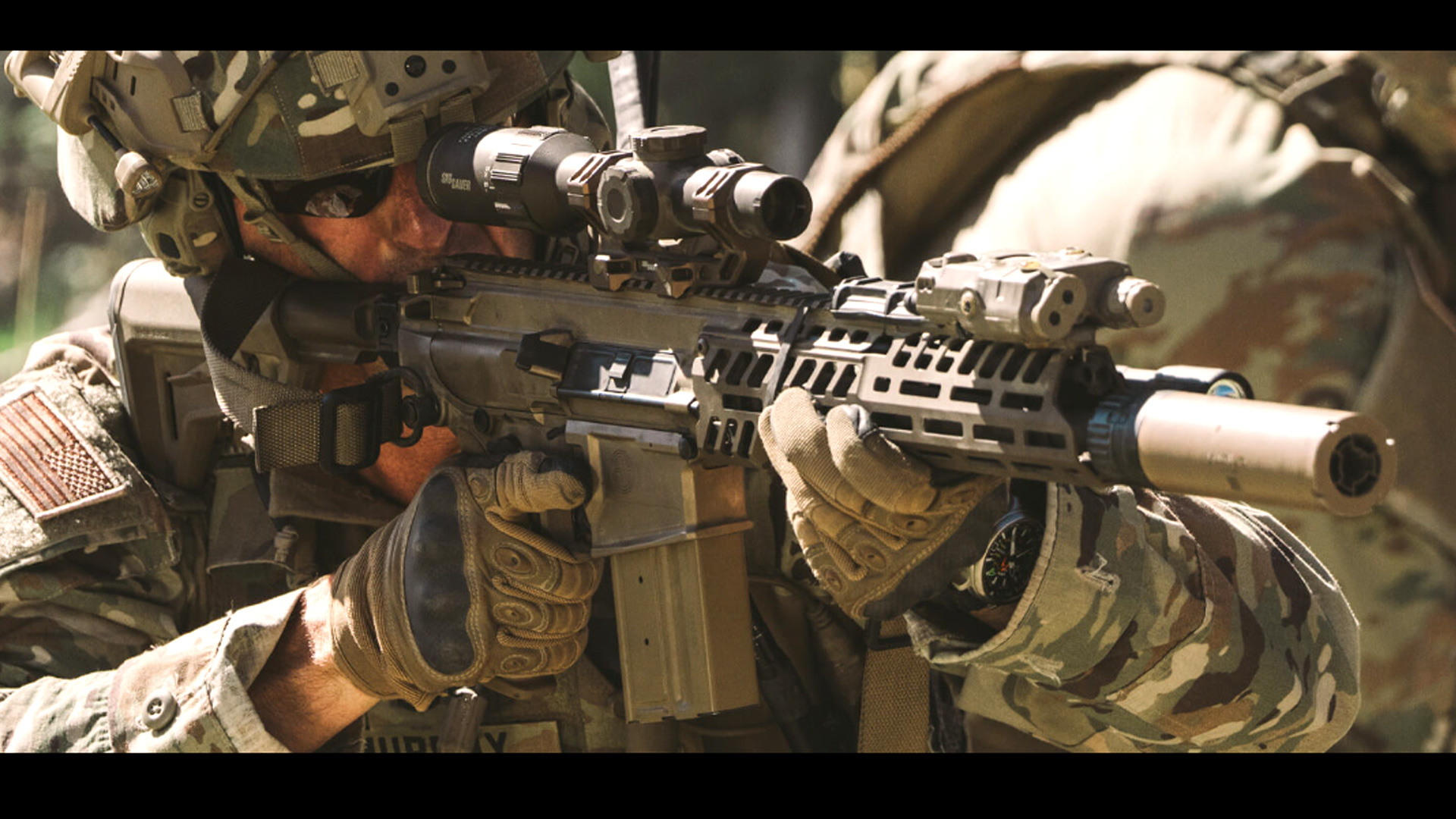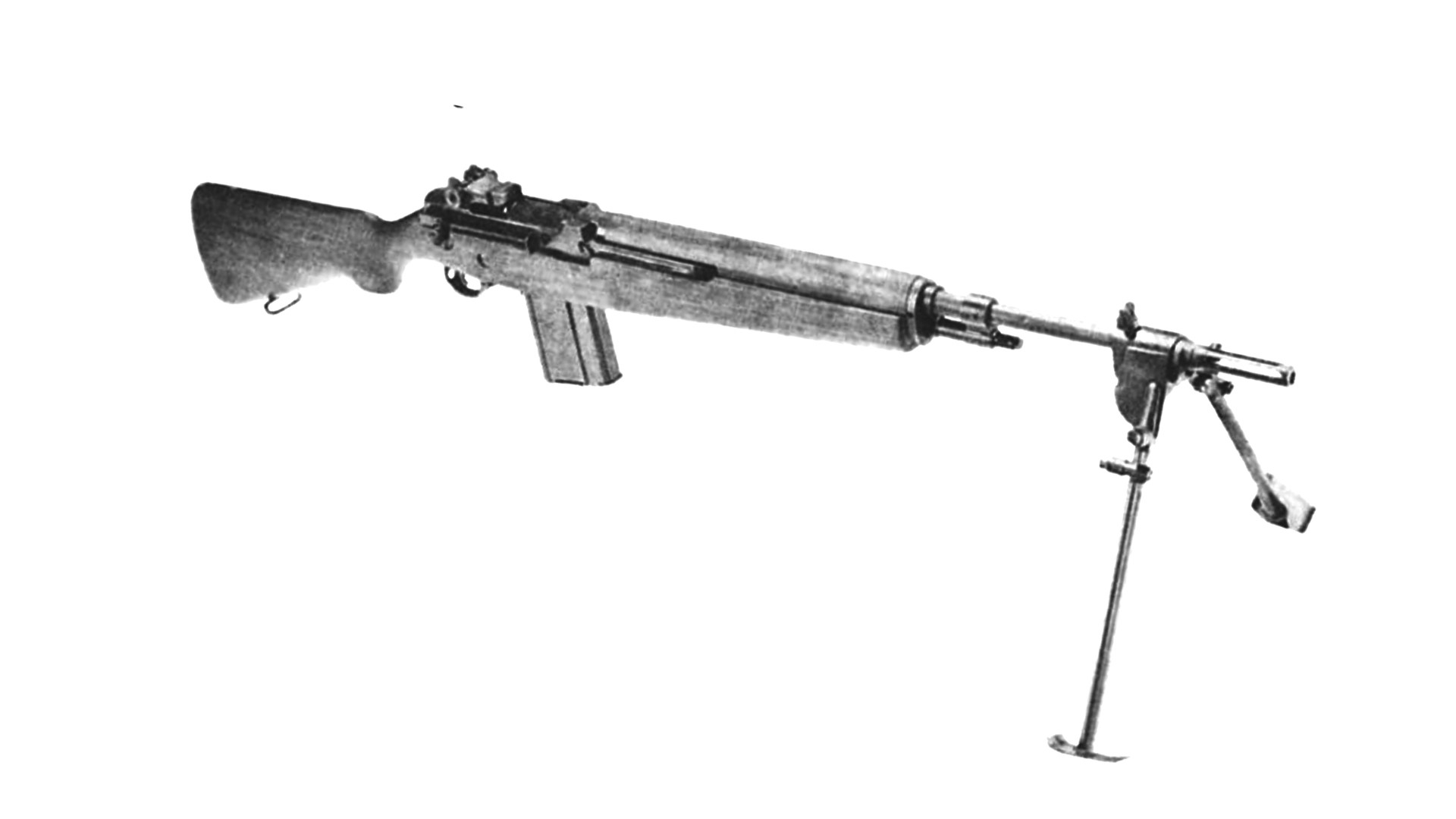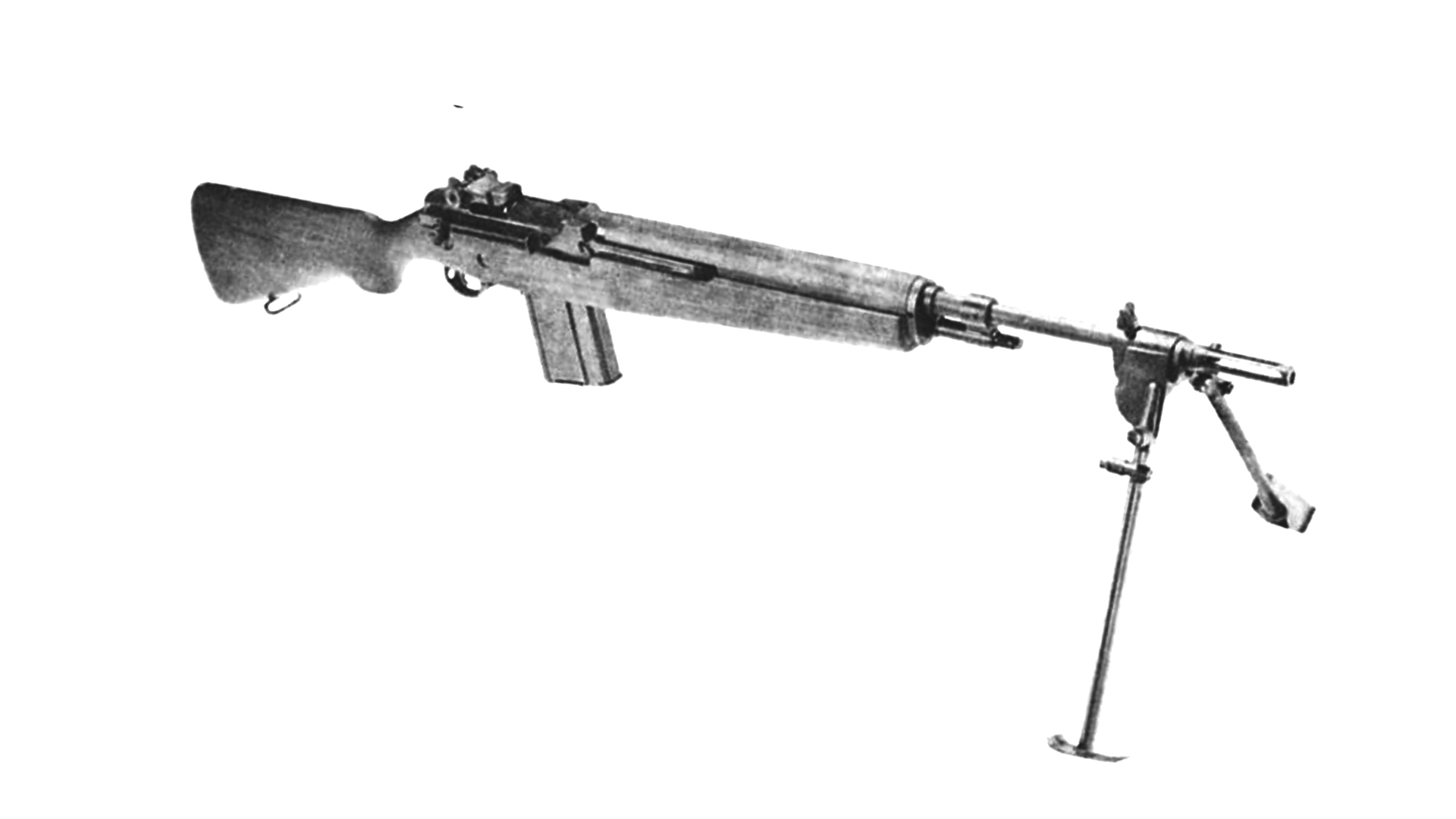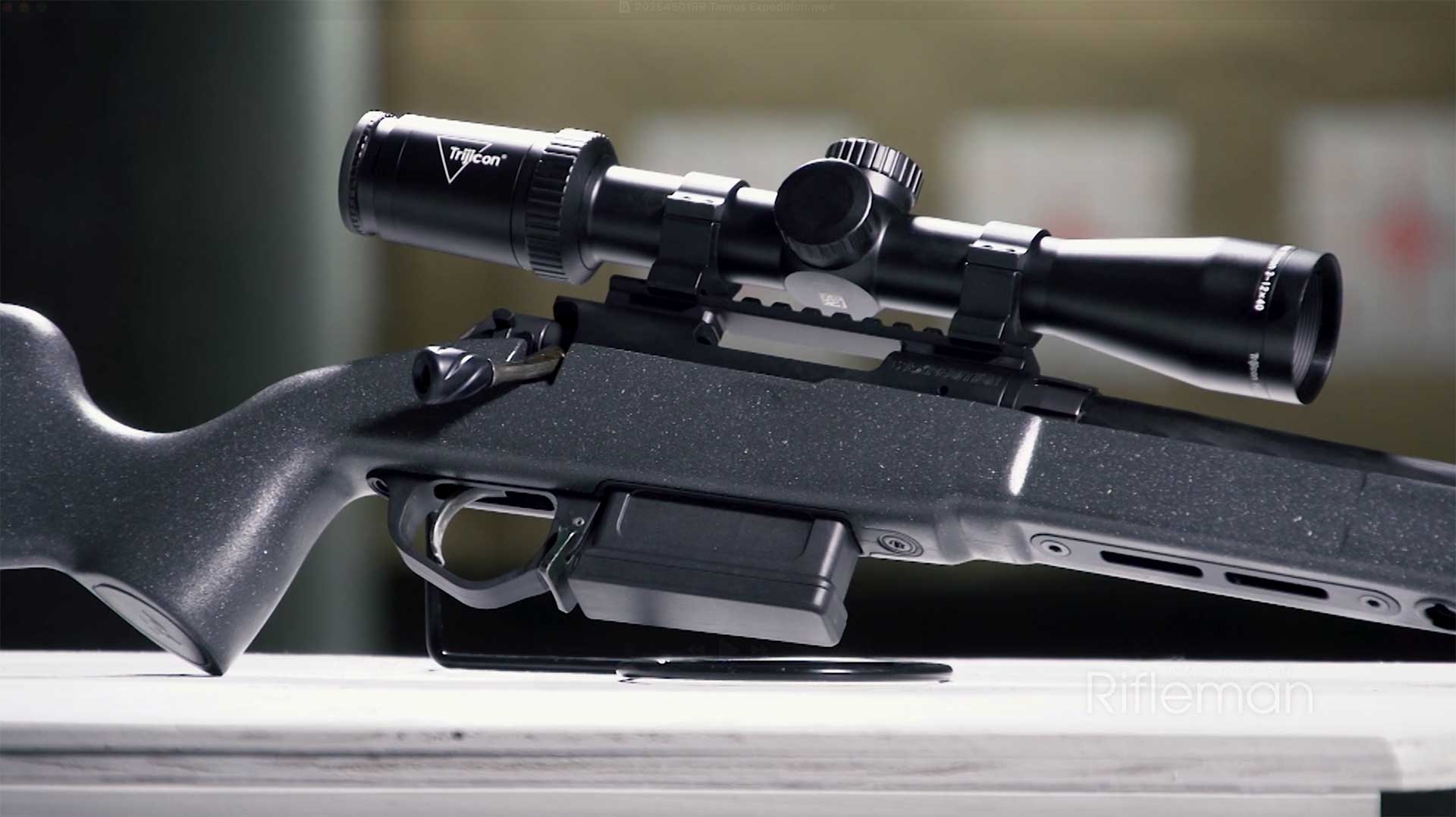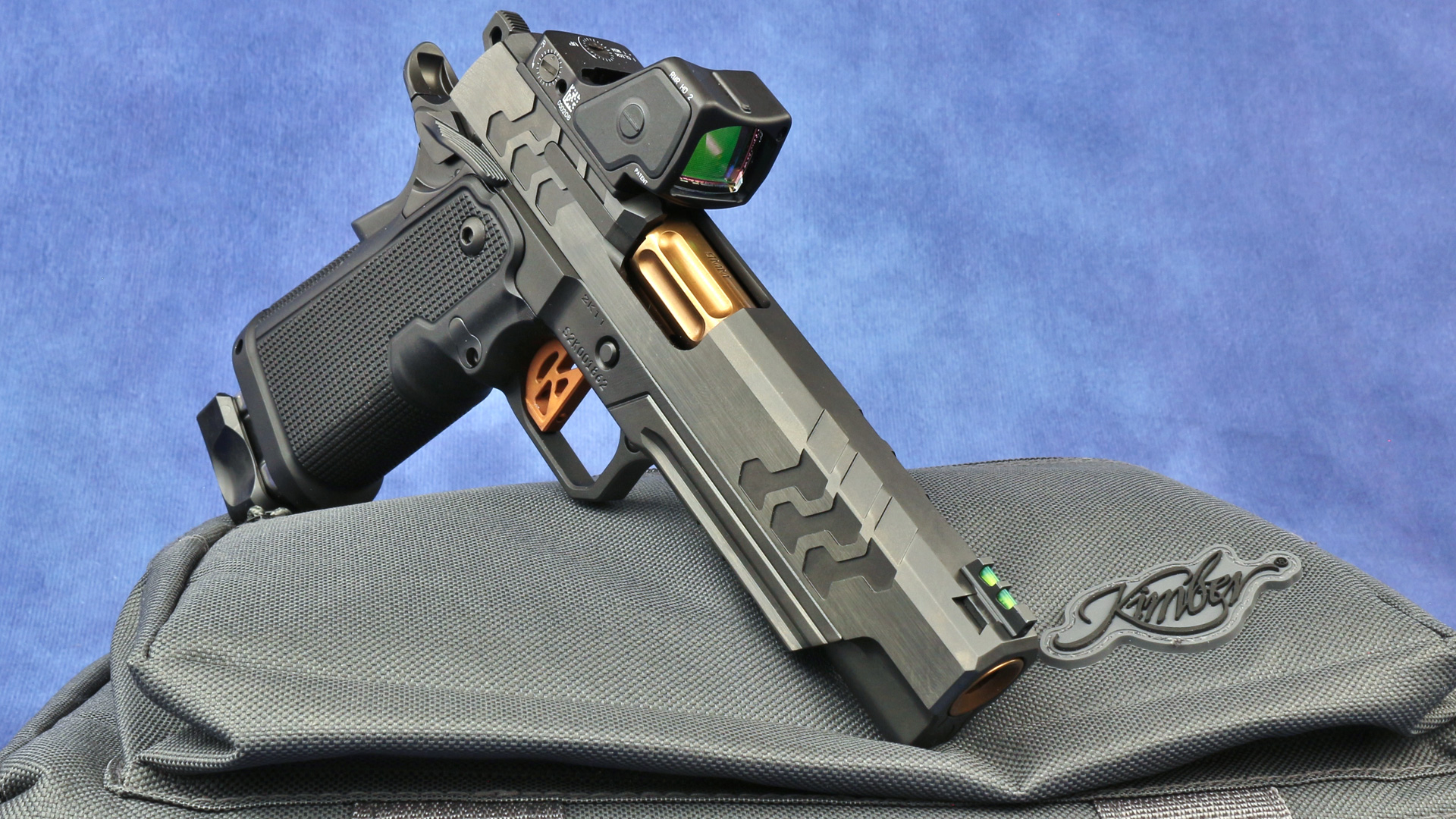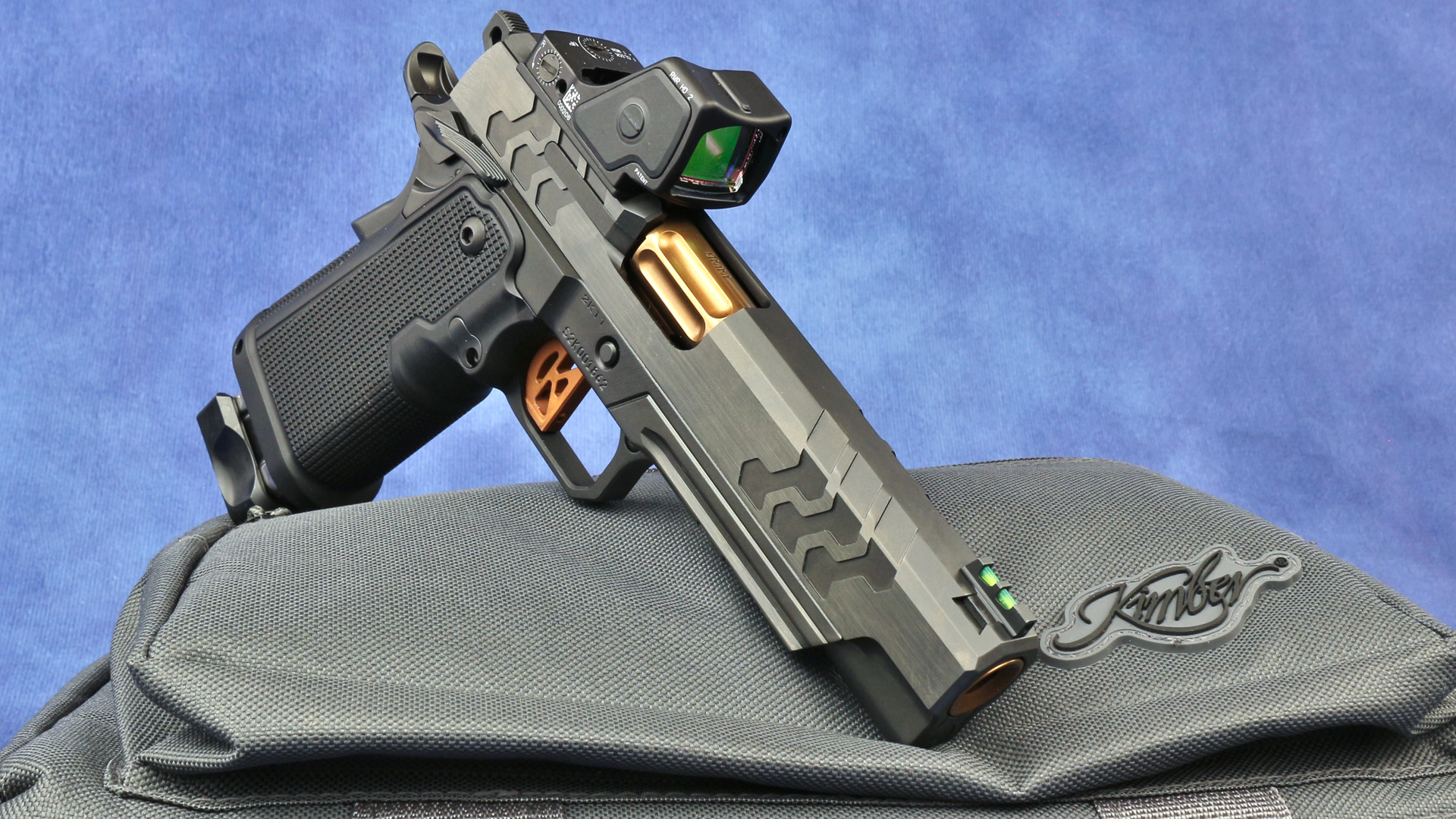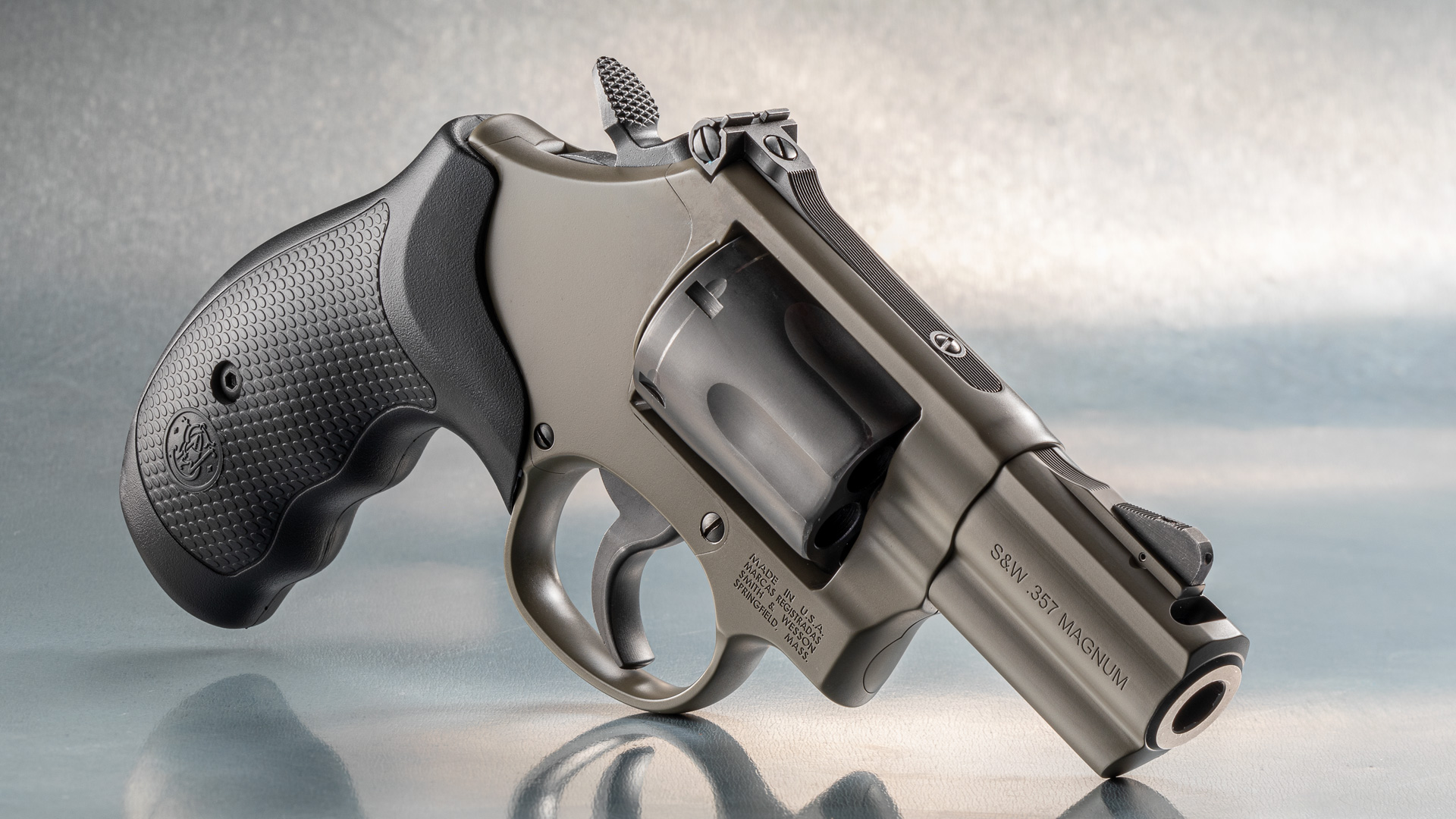
One hundred twenty-seven years ago, Colt introduced a lever-action rifle that shook the foundation at the Winchester facility. The Colt model 1883 Burgess rifle featured several improvements to the Winchester 1873, and since the quality of Colt products rivaled that of Winchester, the threat to its bread-and-butter lever action was profound and very real. In previous years, Winchester simply bought out any patents or improvements to its line, but Colt was simply too big to takeover. Legend has it that representatives from Winchester paid a social visit to Colt and brought along a pair of prototype revolvers, informing the brass at Colt that the New Haven folks were looking at getting into the revolver market. However, if Colt discontinued its lever action, Winchester might reconsider such a costly investment. Colt relented, and Winchester discontinued the revolver project. I have looked high and low for provenance regarding this legend and have found none. On the other hand, at least two firearm historians of my acquaintance believe the story to be true.
The 1883 Burgess rifle is but one of 894 patents granted to a quiet and ever-curious inventor. Andrew Burgess was born Jan. 16, 1837 in Dresden, N.Y. The farm next door to the Burgesses belonged to Matthew Brady, and Burgess began an apprenticeship with Brady in 1855. Burgess was as much of a photographer of the War Between the States as Brady was and he went on to photograph throughout Mexico and Europe, as well as running the Brady gallery as a partner. It is speculated that during his stint as a photographer during the Franco-Prussian War (1870-1871) Burgess developed an interest in firearm design. His first patent was granted Sept. 19, 1871, for an improvement on the Peabody rifle. Soon he opened a gun factory in Owego, N.Y. Eventually, the guns outweighed the photography, and he founded the Burgess Gun Co. of Buffalo, N.Y. in 1893, which he sold to Winchester in 1899. Burgess’ improvements and operating principles are found in guns made by Colt, Marlin, Whitneyville Armory and, of course, Winchester.
At first glance, the 1883 Burgess and 1873 Winchester are strikingly similar in appearance and profile. Both are lever actions with a tubular magazine under the barrel. Each has a steel cap on its slim fore-end and a crescent buttplate. But that’s pretty much the end of the similarities. The 1883 Burgess’ receiver is but two-thirds the length of the Winchester—5 1/4 inches, versus 8 inches—contributing to its 11-ounce difference in weight with identical barrel lengths. Cutouts in the receiver of the Burgess are smaller, leaving more metal for strength, and provide marginally less opportunity for debris to enter the action. Unlike the Winchester, there is no sliding dust cover atop the receiver on the Burgess. Instead of a tilting loading gate a la Winchester, the Burgess utilizes a sliding gate. The Burgess’ breech bolt is more massive than the Winchester; though both utilize a toggle lockup, the Burgess’ is shorter and therefore stronger. Both rifles extract from the top with hooked blades pinned to the breechbolt. The Winchester’s extractor is slightly wider giving more purchase, but it also stands proud from the bolt, making it somewhat more vulnerable to breakage. Ejection was accomplished via the elevator in the Winchester, but the Burgess employs a novel collar surrounding the firing pin under spring tension. This collar has about an 1/8-inch of movement from the breechbolt face, and as the breechbolt is retracted, the collar kicks spent cartridges clear of the receiver.
Because of the “gentleman’s agreement” with Winchester, the Colt 1883 Burgess rifle had a very short run—16 months—and only 6,403 examples were produced. When the Burgess debuted in 1883, carbines were priced at $25 and rifles were $27 to $29, depending upon barrel length. With so few rifles produced, relatively few have survived and most that have were treated poorly. Recently, I spotted an original Burgess in the Cabela’s Gun Room at the Billings, Mont., store. It carried a price tag of $6,000 and was pretty doggy. However, earlier this year I found that Uberti, the Italian gunmaker specializing in fine replicas, is producing a copy of the Burgess rifle, and I acquired a test sample from Taylors & Co.
As expected, my test gun arrived the day before my cowboy action group, the Colter’s Hell Justice Committee, was holding a match. Instead of a thorough breaking in period, all I had time to do was see where it shot. The first five rounds of Winchester .45 Colt cowboy loads made one ragged hole at 25 yards about the size of a quarter, dead on for elevation and perhaps 3/4 to 1 inch to the right. I figured I could get by with that. The match went well, and the new replica performed flawlessly. It attracted a lot of attention from the other shooters, so we had some informal shooting after the match. Everyone liked the Burgess replica, and almost everyone had the same question: Is it available in .44-40 WCF? (A lot of the guys in the CHJC are sticklers for authenticity, and .45 Colt was not originally chambered in this rifle.) The answer is yes, and I have my name on a backorder waiting list.
In the time between our monthly matches, I managed to steal a little time with the Burgess at my local range. Close-range, five-shot groups—25 to 50 yards—were approximately half dollar size, again with Winchester Cowboy Action loads, which was the most accurate ammo during my testing. Out at 100 yards, the groups swelled to 6 inches, due to two things: my aging eyesight and the relatively low velocity that allowed the wind to get in its dirty licks. The 20-inch barrel squeezed an average of 910 fps with this ammo. Part of the accuracy of this carbine is due to an excellent trigger pull. According to my Lyman Trigger Pull Gauge the trigger on this sample broke cleanly at 4 pounds, 4 ounces, pretty darn good for a factory trigger. I’ve seen many bolt actions with a heavier trigger pull. With an empty weight of 6 pounds, 12 ounces, the Burgess handles very well, and moving from target to target is noticeably faster than with my Uberti 1873, which weighs nearly 3/4 pound more than the Burgess. Most cowboy action targets are less than 50 yards so the quick-handling characteristics are welcome. For longer range shooting a bit more mass and a longer sight radius might be desirable, and for that a 25 1/2-inch barrel is available.
Fit and finish are what I have come to expect from Uberti—excellent. Metalwork is evenly polished to a high luster, whether blued or color casehardened. Walnut on my test gun is straight grained with a glossy finish, sans checkering. If I have to find something to complain about it world be the sharp edge of the loading port. After I have sliding some 30 rounds through this orifice, the sharp edge of the loading port dug into my thumb and made it sore—which, I guess, makes me something of a wuss.
Recently, I shot another cowboy match with this rifle just to verify my evaluation. On the plus side, the Burgess is noticeably lighter than my ’73 and has much better handling. Its accuracy for cowboy action shooting and trigger pull are every bit as good as the larger rifle. On the other hand, the Burgess isn’t quite as slick out of the box as the ’73. Part of this, I am sure, is its .45 Colt chambering. It takes just a smidgen of case taper, like the .44-40 WCF, to ease the operation of chambering and extraction—probably why there are no original lever guns chambered in .45 Colt. I cannot be absolutely sure of this, but I have put my order in for the original .44-40 chambering. The only other issue I had with the Burgess was a failure to extract in my most recent match. It may simply have been a case of the nut behind the trigger. In any event, it’s a fine rifle that will fulfill a needed niche among those of us who like to shoot 19th century-style guns but can’t—or won’t—tote the note for an original period firearm.
Manufacturer: Uberti (540) 722-2017; www.uberti.com
Importer: Taylor & Co.; www.taylorsfirearms.com
Model: Model 1883 Burgess
Action: Lever-action rifle
Caliber: .45 Colt (tested), .44-40 WCF
Barrel Length: 20 inches
Magazine Capacity: 10+1
Rifling: 1:16” RH
Sights: Front dovetail post; rear buckhorn adjustable for windage and elevation
Safety: Trigger block
Stock: Walnut
Drop at comb/heel: 1 inch/1 7/8 inches
Length: 37 1/4 inches
Weight: 6 lbs., 12 oz.
Metal Finish:Suggested Retail Price: $1,476

